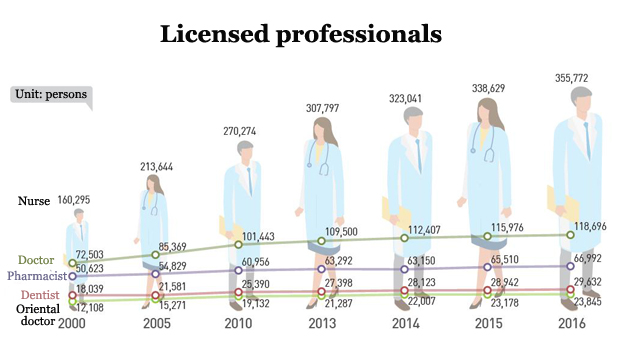The patient to doctor ratio in Korea is improving significantly, the Ministry of Health and Welfare said in a report Friday.
In 2016, there were 230 licensed doctors per 100,000 people, which indicated an increase from 182 doctors per 100,000 people in 2006, data showed.
The increased number of doctors also helped lessen the patient to doctor ratio. The country had one practicing doctor per 440 patients in Korea, an improvement from one doctor per 588 people in 2006.

The nurse to patient ratio improved most notably from one nurse per 502 patients in 2006 to one nurse to 287 patients last year. In total, there were 694 nurses per 100,000 people in 2016, an increase from 462 nurses for 100,000 in 2006.
Medical facilities also improved incrementally. Korea had an average of 126.8 beds per 100,000 people last year, an increase of 2.5 beds for the population from 2015. The number of in-stay hospital beds stayed around the same with 14 beds per 1,000 people.
Meanwhile, data showed the average person went to see the doctor nearly 17 times a year, which was more than double the rate of the OECD average of seven times a year.
The average hospitalization duration was about 14 days, also longer than the OECD average of eight days, the data showed.

